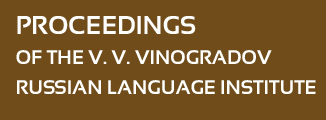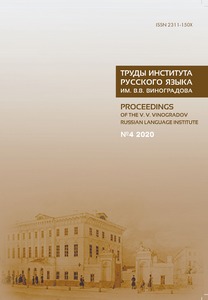STRINGING VERB SUFFIXES IN THE HISTORY OF THE RUSSIAN LANGUAGE: PATTERNS AND FUNCTIONS
Abstract:
The stringing of verb suffixes, developing in different periods of the history of the Russian language, participates in the processes of formation of aspectual relations in the system of the Russian verb. In the pre-national period, the model of suffixal stringing -а- + -вa- undergoes a certain development, while the model of -ова- + -ыва- emerges in the 19th century. In both cases, suffixal doubling supports the imperfective meaning of the verb, which is not quite clearly expressed in the single-suffixed verb that is often bi-aspectual. However, suffixal reduplication patterns do not become productive means of aspects formation in any of the historical periods, expressing only signifi cant tendencies in this area. In the monuments of the XI–XVII cc., verbs with the secondary suffixal formant -ва- denote continuous or usual, constant action, unlike monosuffixal verbs, which are neutral regarding this semantics. Duration, reinforced by means of suffixal repetition, is the ground on which the expressive character of double-suffixed imperfectives actively develops, which can be seen in Old Russian and especially in Old Russian writing. The models of bi-aspectual imperfectivization, formed in different periods of the history of the Russian language, are characterized by differently directed socio-stylistic vectors. In the pre-national period, derivatives of the -а- + -ва- model are highly bookish; derivatives of the new model -ова- + -ыва- are in most cases occasional, extra-literary units.


